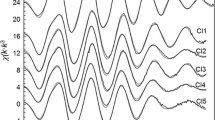In the presence of Fe3+ cation, S-nitrosoglutathione (GSNO) loses the potency to inhibit catalase in the system containing hemoglobin (an NO trap) with iron chelator or -SH inhibitor (a “sulfhydric poison” Hg2+). In the absence of hemoglobin, the inhibitory potency is retained in both cases. These properties are characteristic of dinitrosyl-iron complexes containing ferrous iron and thiols (DNIC/RSH). Since the potency to inhibit catalase results from the presence of -NO group, its loss in the presence of hemoglobin relates probably to transfer of this group to hemoglobin. The nitrosothiols are relatively stable compounds, so their ability to release NO under the action of iron chelators, which is characteristic of DNIC/RSH, can have important physiological implications, because the role of such chelators can be played by some endogenous agents as well. Thus, release of NO from the donor compounds can be controlled and regulated. Probably, the agents such as nitrosothiol+Fe3+ are the major constituents in the pool of nitroso compounds.
Similar content being viewed by others
References
Titov VY, Dolgorukova AM, Petrov VA, Osipov AN. Selectivity in Physiological Action of Nitric Oxide: A Hypothetical Mechanism. Bull. Exp. Biol. Med. 2017;163(6):726-730. doi: https://doi.org/10.1007/s10517-017-3890-z.
Titov VY, Ivanova AV, Petrov VA, Serezhenkov VA, Mikoyan VD, Vanin AF, Osipov AN. Can summary nitrite+nitrate content serve as an indicator of NO synthesis intensity in body tissues? Bull. Exp. Biol. Med. 2012;153(6):839-842.
Balazy M, Kaminski PM, Mao K, Tan J, Wolin MS. S-nitroglutathione, a product of the reaction between peroxynitrite and glutathione that generates nitric oxide. J. Biol. Chem. 1998;273(48):32,009-32,015.
Hickok JR, Sahni S, Shen H, Arvind A, Antoniou C, Fung LW, Thomas DD. Dinitrosyliron complexes are the most abundant nitric oxide-derived cellular adduct: biological parameters of assembly and disappearance. Free Radic. Biol. Med. 2011;51(8):1558-1566.
Severina IS, Bussygina OG, Pyatakova NV, Malenkova IV, Vanin AF. Activation of soluble guanylate cyclase by NO donors — S-nitrosothiols, and dinitrosyl-iron complexes with thiol-containing ligands. Nitric Oxide. 2003;8(3):155-163.
Titov VYu. The enzymatic technologies open new possibilities for studying nitric oxide (NO) metabolism in living systems. Curr. Enzyme Inhibition. 2011;7(1):56-70.
Vanin AF. EPR characterization of dinitrosyl iron complexes with thiol-containing ligands as an approach to their identification in biological objects: an overview. Cell Biochem. Biophys. 2018;76(12):3-17.
Vanin A. Dinitrosyl iron complexes with thiolate ligands: physico-chemistry, biochemistry and physiology. Nitric Oxide. 2009;21(1):1-13.
Author information
Authors and Affiliations
Corresponding author
Additional information
Translated from Byulleten’ Eksperimental’noi Biologii i Meditsiny, Vol. 168, No. 7, pp. 49-52, July, 2019
Rights and permissions
About this article
Cite this article
Titov, V.Y., Osipov, A.N., Ibragimova, L.G. et al. Modification of Biochemical Properties of Nitrosothiol by Fe3+ Cation: A Presumable Physiological Role. Bull Exp Biol Med 168, 41–44 (2019). https://doi.org/10.1007/s10517-019-04641-7
Received:
Published:
Issue Date:
DOI: https://doi.org/10.1007/s10517-019-04641-7




